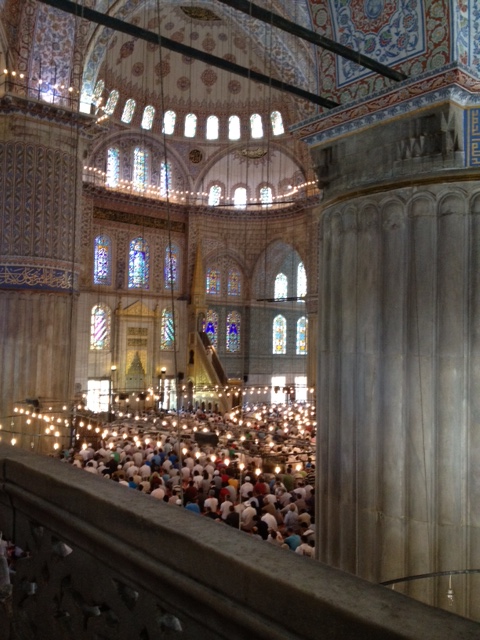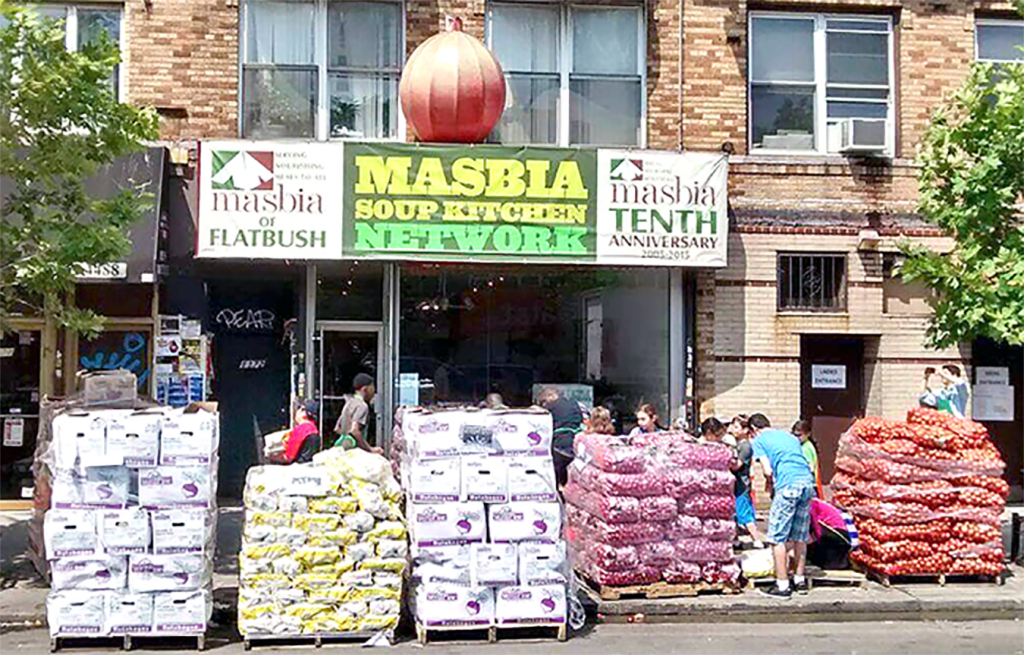“In the Pakistan I grew up in, women prayed at home. Mosques were the kingdom of men.”

August 22, 2012
I.
Days after returning home to New York from a silent retreat in California, I was on the R train, engrossed in a book—Sufi Meditation and Contemplation—when a man interrupted me.
—“Sufi meditation? Is this Islamic?”
I glanced up, nodded, and went back to reading.
—“But what is the need for this?” the man insisted. “What is the use of Sufi meditation when you have salaat (Muslim ritual prayer)? Do you not agree?”
It was the second week of Ramadan. Honoring the spirit of the auspicious month, I interpreted the encounter as a necessary trial in patience. Not only had the man crossed boundaries of privacy on the subway—couldn’t he see I was reading?—and was fully assuming we were engaged in conversation, when we clearly weren’t, but he’d also had the audacity to question the centuries-old tradition of mystical Islam!
And so I put my book down in order to listen to what he had to say. Sitting next to me, he spoke with gesticulating arms as much as he did with words, drawing the attention of passengers on the bench across from us. He was from Peru, he announced, and a relatively recent convert to Islam. He’d been a practicing Muslim for ten years. The man smiled proudly. Feeling happy for his happiness, I congratulated him and re-opened my book, realizing he’d probably just wanted to share the news of his faith with me, a fellow Muslim.
But then he said, “You Sunni, right?” Caught unaware, I found myself nodding, instantly annoyed at having unconsciously and carelessly consented to answer his disturbing question. Shi’as and Sunnis are both Muslims. The creation of the two denominations is historic, resulting from an inability to agree on who would succeed as caliph after Prophet Muhammad died in the seventh century.
He leaned forward. “What do you think about Shi’ias? I really don’t understand them.” His brow was furrowed and his face, surprisingly, bore no malice, despite his malicious question.
I come from Pakistan, a country where Shi’as are persecuted, where too much blood is shed in the name of difference, where the notion of unity is a forgotten founding pillar of the nation. My views on Islam, on the other hand, are catholic and my practice idiosyncratic. I was flummoxed. How does one respond in a dignified, conciliatory manner to an egregiously prejudiced question, on the subway, no less? I found myself channeling my five-year-old son. “We’re all one, aren’t we!” I mused, stating the obvious. “Hindus, atheists, Buddhists, Shi’a, Sunni, you, me: We’re all made of the same stuff.” Who am I to talk religion? I’m no authority on the matter.
The man remained silent, then shook his head, grinning. “That is truly a great answer!” he stated without irony, as the train pulled into Times Square. I offered a pinched smile in return as I stepped out onto the crowded platform, confused, still shaken. Here was a man who’d turned to Islam in New York City but had adopted and inherited in the conversion someone else’s regional history of sectarian prejudice and hate. Here was I, a secular Muslim, turned accidental ambassador of my faith on the R train.
II.
I set myself a Ramadan challenge: to step out of the boundaries of my safe familiar and visit a mosque. My spiritual home in New York City is a Sufi dergah in Tribeca. It is a beautiful, aesthetically pleasing space, conducive to quiet contemplation and meditation. On Thursday evenings, it is open to the public for zikr, the ceremony of Divine remembrance. Our circle is led by a wise and beautiful woman—Sheikha Fariha Fatima—who possesses a joyous and compassionate approach to faith and an infectious laugh. The spiritual life, I’m learning under her guidance, is the path of love, and of surrender to the Divine will. It is frequently riven by heartache but reliably leavened by a sense of humor and sustained belief. When I walked into the dergah for the first time in 2010, I understood instantly that I had stepped into the embrace of a sacred space that would lead me to the heart of a faith I was born into but felt distanced from, overwhelmed by its seemingly ascerbic and judgmental mores.
I am a believer. But when it comes to organized religion, prescribed rituals and ceremonies sifted through history, I balk. I grew up in a secular home, and moved frequently, so much that my sense of rituals and ceremonies is fractured and alloyed at best. It is not so much rituals that make me nervous and uncomfortable, but the people performing them, who’ve inherited and owned them, who look askance at the disruption triggered by the fumblings of newcomers.
My family has been “moving” for generations, and in the course of this journey we’ve experienced Islam’s many inflections: subtle and overt; mystical and orthodox; private and public; practices that are South Asian, Central Asian, Arab, American. It’s as if the universe is intent on ensuring I don’t petrify into any single tradition, that I remain nomadic, adopting and discarding rituals, drifting in and out of cultures, as fluid as rain water sloshing across borders.
In the Pakistan I grew up in, women prayed at home. Mosques were the kingdom of men. And so it wasn’t until I was nineteen that I visited a mosque for the first time—in Waterloo, Iowa. My in-laws were active congregants and I found myself in the acutely uncomfortable position of fumbling through the motions of ritual prayer—salaat—in a cramped attic space, segregated from the men whose domain was the spacious hall of the mosque. This first introduction filled me with dread. Mosques, I resolved, were gender-segregated spaces of insidious competition, dank walls, and faintly molding carpet. Best to be avoided.
Ironically, it wasn’t until later when I visited the mosques of Mecca and Medina in Saudi Arabia that I discovered the democratic hospitality of these sacred spaces of worship—mosques that did not shun women into corners and smelly basements, that, in fact, requested the zealously veiled to unveil their faces, keeping only their hair modestly covered. I was heartened. When I returned to live in the United States, and found myself in desperate need of that warm embrace in the aftermath of 9/11, I visited a mosque in the East Village, in the hopes of seeking solace amongst my beleaguered community. But at the entrance, a man said to me, No women allowed here, and turned me back out onto the hostile street.
Ten years have passed since that incident, abrasive as sandpaper on an open wound. On one hand, I shrug it off. On the other, I have unresolved feelings. It angers me that the experience served to compound my bias against American mosques and their tendency towards self-righteousness and male superiority.
So my Ramadan challenge to visit a new mosque is as much about conquering a fear of rejection as it is about attempting to rectify and expand my view of this place of worship.
III.
I learn about the Imam Ali Center, an Iranian mosque in Woodside, Queens, from a friend at the dergah who raves about their beautiful Ramadan prayer service. It is part of the well-organized Razi School that prides itself on academic excellence in a distinctively Islamic environment. As I approach the entrance, a habitual wave of anxiety seizes me. I am dressed in a long kurta and pants and have draped a shawl over my head and shoulders—but still, I wonder if I will stand out. I don’t own a chador, and on principle, refuse to deviate from my South Asian traditional attire, which I consider to be modest enough without having to supplement with superfluous yards of cumbersome fabric.
I find the women’s entrance clearly demarcated. Women and men, it turns out, share the same hall, divided only by a wall of bulletin boards. Apart from a few cursory glances as I step inside, no one bothers me. Persian rugs with floral motifs in hues of red, pink, and green cover the prayer area. A banner of Quranic calligraphy adorns the upper segment of a wall. Beneath an arch in the middle of the hall, an elevated velvet-covered chair sits throne-like. This is the mimbar or pulpit from where the imam or maulana addresses congregants.
Women cluster on the carpeted floor, some leaning against the wall, bent over Qurans, reading silently, occasionally breaking their rhythm to whisper to each other. A few elderly women are seated on chairs. A hushed aura of murmured prayers fills the room, interrupted only by a man reciting Quranic verses on the other side of the wall, out of sight, but whose voice is transported clearly over to us from a loudspeaker. A trio of children crawls beneath a table at the back, inventing a silent game which keeps them entertained and their mothers undisturbed. I have brought my tasbih—prayer beads—and after making myself comfortable on the floor, in the middle of the room, I begin to recite the names of Allah—O Compassionate One, O Revealer of Inward Beauty, O Transformer of Hearts, O Source of Ecstasy—and end with the prayer of Jonah, as the now-full room stands up in preparation for Maghrib prayers which will mark the end of this day’s fast.
As we line up in rows, standing shoulder to shoulder, I observe that many of the women place clay tablets on the floor before them, the exact spot where their heads would touch the ground when kneeling in the position called sajdah. I had noticed a shelf full of the tablets, resembling slim bars of soap, next to the rosaries and Qurans, when I first entered the prayer hall and had wondered what they were. My friend, Fatimah, explains that they are mud patties from the sacred land of Karbala in Iraq where Imam Hussein, Prophet Muhammad’s grandson, was martyred in the famous Battle of Karbala in the year 680. By touching their heads to the tablets, Shi’as remind themselves of the legacy of sacrifice, martyrdom, and faith.
Once the prayers begin, guided by the maulana on loudspeaker, I discover that the Shi’a ritual prayer is slightly different from the Sunni prayer that I am familiar with. I follow the motions of the line of women in front of me. As I kneel down on the attractive Persian carpet, I have an epiphany. Although Pakistan has the second largest Shi’a population in the world, after Iran, I have never before witnessed or participated in Sh’ia prayers. How strange and wonderful that all it takes is a subway ride on the 7 train to Lincoln Avenue, in Queens, to attain a spiritual and cultural experience that demystifies the falsely constructed “other” and, at the same time, to be transported by the beautiful recitation and the synchronicity of communal prayer.
After Maghrib, we traipse out into the hall and line up outside the cafeteria where two women ladle generous helpings of buttered rice and chicken stew into our plates. On the communal tables—women occupying one half of the cafeteria, men the other, children galloping freely between segregated spaces—there are plates of feta cheese, mint leaves, and dates. I am won over by the hospitality, the refreshing absence of critical and questioning glances, the mosque’s acceptance of newcomers. I am even more impressed to learn that the Imam Ali Center is open to the public, regardless of faith, as long as visitors respect the dress code of modesty.
We return to the prayer hall after the iftar meal for the Isha and Tarweeh prayers, followed by Ramadan prayers that are performed in sets of two. Maulana Hadi Yasin, a handsome young man with a trim beard—who must be in his thirties, I surmise—leads the prayer. He sits upright on the elevated velvet chair, within view of both men and women, his stately gowns gathering in folds at his feet. His presence injects the evening with an august, ceremonial air that was utterly lacking in the mosques in Iowa and the East Village. Fatimah tells me that the majority of maulanas study at the religious seminary, in Qom, Iran. The course of religious training, Hawza Ilmiyya, is the equivalent of the Jewish Yeshiva.
Bending and bowing and standing, over and over again, carried away by the devotional ambiance, I understand I am participating in an entirely different caliber of sacred worship, one that is inspired by and emulating the grand mosques of the Middle East, right here in New York City.
IV.
At the beginning of the month of fasting, Sheikha Fariha, the guide of the Nur Ashki Jerrahi Sufi Order in New York City, tells us to “take the month of Ramadan as a time for lover and Beloved to find each other.” On the last Friday of Ramadan, her words echo in my heart, as I make my way to the Blue Mosque in Istanbul for communal prayers. Over these four weeks of Ramadan, I have traveled to California, Queens, Karachi, and Istanbul, seeking and remembering varying traditions of Islam. With each successive day of fasting, I feel as though I have journeyed further inwardly, listening and seeing with inner eyes and ears.

As the taxi driver hurtles my son and me through the old quarter of Istanbul, winding through Friday traffic, I am restless, anxious that the doors of the mosque will close, that on this holy day, we will be locked outside while the Beloved is invoked indoors in that gloriously beautiful mosque where the women occupy, in my opinion, the “best seats in the house”—upper balcony sections with sweeping views of the entire mosque, the imam at the mimbar and all the congregants on the ground floor.
We run through a stone tunnel, past an old woman squatting on the floor selling packets of tissue paper for one lira. We are four minutes late. Tourists are being turned away at the door by security guards. Armaan and I remove our slippers and wait. The security guard gestures us through without question. Gratitude washes over me. How rare for a door to open so easily. Without explanation, without begging to be let in, without beseeching and saying, I’ll show you, I too can belong.



